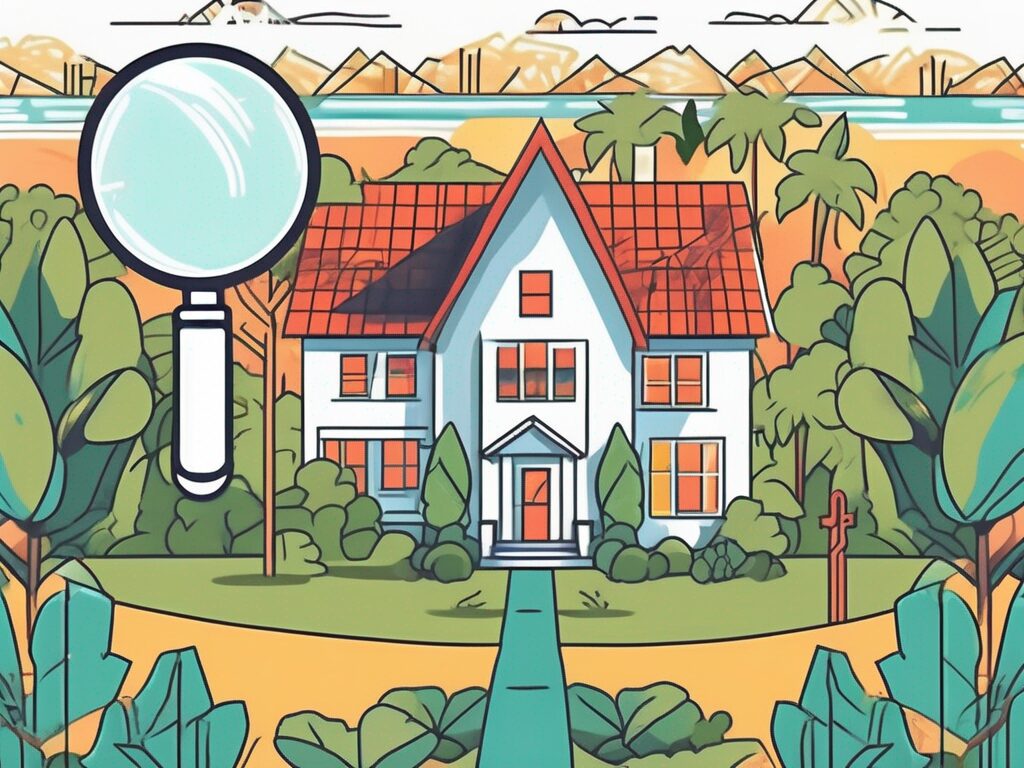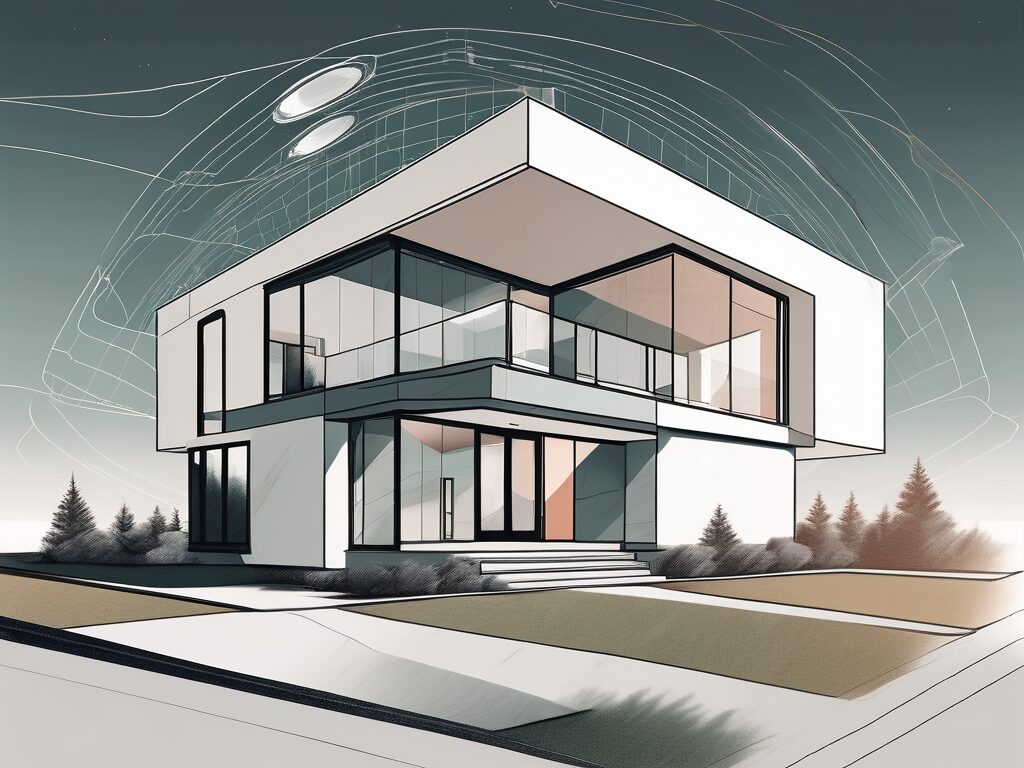
Agent A-Team or Solo Superhero? Finding the Right Real Estate Partner for Your Selling Journey in Wildwood Florida
When it comes to selling your home in Wildwood, Florida,…
January 29, 2024
In today’s fast-paced real estate market, technology has become an integral part of the buying and selling process. One of the most significant advancements in this area is the use of virtual tours. These immersive visual experiences have revolutionized the way homes are marketed and viewed by potential buyers. In St. Cloud, virtual tours have become an increasingly popular tool among real estate agents and homeowners. Understanding the importance and impact of virtual tours is crucial for anyone involved in the modern home selling process.
Before delving into the benefits and adoption of virtual tours, let’s first establish what they are and their purpose. A virtual tour is a digital representation of a property that allows viewers to virtually explore the space from the comfort of their own device. Unlike static photographs, virtual tours provide a comprehensive and interactive experience, giving potential buyers a realistic sense of the property’s layout, design, and ambience.
A virtual tour is a multimedia presentation that combines 360-degree images or videos, floor plans, and interactive elements to create an immersive experience. Its purpose is to provide an in-depth preview of a property to potential buyers, allowing them to visualize themselves living in the space and making informed decisions about whether to pursue the property further.
When it comes to the definition of virtual tours, it’s important to note that they are not limited to just residential properties. Virtual tours are also widely used in the hospitality industry, allowing potential guests to explore hotels, resorts, and vacation rentals before making a booking. Additionally, virtual tours have found applications in the education sector, where they are used to provide virtual campus tours to prospective students.
Virtual tours have gained popularity due to their ability to bridge the gap between online browsing and physical property visits. In today’s fast-paced world, potential buyers and renters often rely on online listings to narrow down their choices. Virtual tours offer a more engaging and informative alternative to traditional property listings, helping users make more confident decisions without the need for multiple in-person visits.
Virtual tours rely on advanced imaging technologies, such as 360-degree cameras and virtual reality (VR) headsets, to capture and present a property in a highly realistic manner. These technologies enable seamless navigation through rooms and allow users to zoom in on specific details of interest.
360-degree cameras capture a complete view of the surroundings, allowing users to explore the property from any angle. These cameras use multiple lenses to capture images simultaneously, which are then stitched together to create a seamless panoramic view. The resulting images can be viewed on a computer, smartphone, or VR headset, providing users with an immersive experience.
Virtual reality headsets take the virtual tour experience to the next level by completely immersing users in a simulated environment. These headsets create a 3D visual and auditory experience, making users feel as if they are physically present in the property. By wearing a VR headset, potential buyers can walk through rooms, examine finishes, and even get a sense of the property’s scale and proportions.
With the widespread use of smartphones and tablets, virtual tours have become more accessible and user-friendly than ever before. Users can simply download an app or access a virtual tour through a website to start exploring properties. The interactive elements of virtual tours, such as hotspots and clickable icons, allow users to navigate through different rooms, access additional information, and even interact with virtual objects.
In conclusion, virtual tours have revolutionized the way properties are showcased and experienced. By leveraging advanced imaging technologies, these immersive presentations provide potential buyers and renters with a realistic and interactive preview of a property, helping them make more informed decisions. As technology continues to evolve, virtual tours are likely to become an integral part of the real estate industry and beyond.
Incorporating virtual tours into the home selling process has proven to have a profound impact on how properties are marketed and how buyers perceive them. Let’s explore the ways in which virtual tours enhance home listings and how they compare to traditional home viewings.
Virtual tours offer several advantages that enhance the presentation of a home listing. Firstly, they provide a comprehensive view of the property, allowing potential buyers to virtually walk through each room and get a feel for the flow and layout. This level of detail goes beyond what can be captured in static photographs, ultimately giving buyers a better understanding of the space.
Furthermore, virtual tours can showcase the unique features of a property in a way that static images cannot. For example, a virtual tour can highlight architectural details, such as intricate crown molding or a stunning fireplace, by allowing viewers to zoom in and explore these elements up close. This level of interactivity creates a more immersive experience for potential buyers, making the property more memorable and enticing.
Secondly, virtual tours enable potential buyers to explore the property at their own pace and convenience. Whether they want to revisit specific areas of interest or virtually tour the property multiple times, virtual tours allow for flexibility and provide a sense of control. This level of engagement increases the chances of genuine interest and inquiries from potential buyers.
Moreover, virtual tours can incorporate additional information about the property, such as floor plans or interactive hotspots that provide details about specific features or amenities. This added layer of information helps potential buyers make more informed decisions and can further enhance their understanding and appreciation of the property.
While traditional home viewings have their merits, virtual tours offer distinct advantages over this traditional approach. For starters, virtual tours save valuable time for both buyers and sellers. Instead of physically visiting numerous properties, buyers can narrow down their options by experiencing virtual tours first. This streamlines the home buying process and ensures that buyers only visit properties of genuine interest.
In addition to saving time, virtual tours also eliminate the inconvenience of coordinating schedules between buyers, sellers, and real estate agents. With virtual tours, potential buyers can explore properties at any time that suits them, without the need for physical appointments. This flexibility allows buyers to thoroughly evaluate properties without feeling rushed or pressured.
Additionally, virtual tours eliminate geographical constraints. Potential buyers who are unable to physically visit a property, such as out-of-town buyers or those with mobility issues, can still explore properties through virtual tours. This widens the pool of potential buyers and opens opportunities for sellers to attract a broader audience.
Furthermore, virtual tours can provide a more objective and unbiased view of a property. In traditional home viewings, the presence of a real estate agent or seller can influence the buyer’s perception and potentially overshadow certain aspects of the property. With virtual tours, buyers can form their own opinions and focus on the features that matter most to them without any external influences.
In conclusion, virtual tours have revolutionized the home selling process by offering a more immersive and convenient way for potential buyers to explore properties. The comprehensive view, interactivity, and flexibility provided by virtual tours enhance home listings and provide distinct advantages over traditional home viewings. As technology continues to advance, virtual tours are likely to become an increasingly integral part of the real estate industry.
Virtual tours provide numerous advantages for both home sellers and buyers. Let’s explore the benefits that virtual tours offer to each party.
For home sellers, virtual tours offer a competitive edge in the market. By providing an immersive and realistic virtual experience of their property, sellers can significantly increase buyer interest and engagement. Virtual tours attract more qualified buyers who have a genuine interest in the property, reducing wasted time and increasing the likelihood of receiving competitive offers.
Moreover, virtual tours allow sellers to showcase the unique features and highlights of their property. They can highlight the spaciousness of the living room, the modernity of the kitchen, and the stunning views from the balcony. By presenting these attractive aspects through a virtual tour, sellers can capture the attention of potential buyers and create a lasting impression.
In addition to attracting more buyers, virtual tours also provide sellers with the opportunity to showcase their property to a wider audience. These tours can be easily shared on various platforms, including real estate websites and social media. This maximizes exposure and reaches potential buyers who may not have considered the property otherwise. By utilizing virtual tours, sellers can tap into a larger pool of interested buyers and increase their chances of a successful sale.
Virtual tours benefit home buyers in numerous ways. Firstly, they save time and effort by allowing buyers to screen properties without physically visiting them. This is particularly beneficial for buyers who are relocating or exploring homes in a different city. Instead of spending hours traveling to various properties, buyers can conveniently view multiple homes through virtual tours, narrowing down their options and focusing on the ones that truly catch their interest.
Furthermore, virtual tours provide buyers with a more accurate depiction of the property. While traditional photographs can be deceiving, virtual tours offer a comprehensive view of the property’s layout, size, and overall condition. This reduces the risk of disappointment or surprises upon physical inspection. Buyers can make more informed decisions based on their virtual tour experience, ensuring that the property meets their needs and preferences.
Lastly, virtual tours enable buyers to envision themselves living in the space. By virtually exploring each room and visualizing their furniture and personal belongings in the property, buyers can better assess its suitability. This immersive experience allows buyers to evaluate the flow of the space, the functionality of the rooms, and the overall ambiance of the property. Virtual tours provide buyers with a sense of connection to the property, helping them make confident decisions.
St. Cloud’s real estate market has embraced virtual tours, with an increasing number of local agents and sellers recognizing their effectiveness. The rise of virtual tours in this region has been remarkable, with industry experts predicting further growth and innovation in the future.
In recent years, virtual tours have become a staple in St. Cloud’s real estate market. With the convenience and advantages they offer, both sellers and buyers are actively seeking properties with virtual tours. Real estate agents in St. Cloud have adapted to this demand by investing in virtual tour technology and integrating it into their marketing strategies. As a result, virtual tours have become an expected and valued feature in home listings in the area.
Virtual tours provide potential buyers with a comprehensive view of a property, allowing them to explore every corner and detail without physically visiting the location. This technology has revolutionized the way people search for homes, making the process more efficient and convenient. Buyers can now save time and effort by narrowing down their options through virtual tours before deciding which properties to visit in person.
Moreover, virtual tours have proven to be particularly beneficial in the current global pandemic. With restrictions on travel and social distancing measures in place, virtual tours have become an essential tool for homebuyers and sellers. They provide a safe alternative to traditional open houses and showings, allowing individuals to explore properties from the comfort and safety of their own homes.
Real estate agents in St. Cloud have recognized the value of virtual tours in attracting potential buyers. By incorporating this technology into their marketing strategies, agents can showcase properties in a more engaging and interactive way. Virtual tours not only capture the attention of buyers but also help them visualize themselves living in the space, ultimately increasing the likelihood of a successful sale.
The future of virtual tours in St. Cloud’s real estate market looks promising. As technology continues to evolve, virtual tours are projected to become even more sophisticated and immersive. Buyers can expect enhancements such as virtual reality (VR) tours, which provide an even more immersive experience. With VR tours, potential buyers can feel as if they are physically walking through a property, experiencing the space in a way that static images or traditional videos cannot replicate.
Additionally, advancements in artificial intelligence (AI) may enable personalized virtual tours, tailoring the experience to individual buyer preferences. AI algorithms can analyze a buyer’s preferences and provide customized virtual tours that highlight features and aspects that align with their specific needs and desires. This level of personalization can greatly enhance the home search process, making it more efficient and enjoyable for buyers.
Furthermore, virtual tours can also benefit sellers by attracting a wider audience. With the ability to reach potential buyers from different locations, virtual tours eliminate geographical barriers and expand the reach of property listings. This opens up new opportunities for sellers, as they can showcase their properties to a larger pool of potential buyers, increasing the chances of a quick and successful sale.
In conclusion, the adoption of virtual tours in St. Cloud’s real estate market has revolutionized the way properties are marketed and explored. With their convenience, safety, and immersive experience, virtual tours have become an integral part of the homebuying process. As technology continues to advance, the future of virtual tours in St. Cloud looks promising, with even more innovative features and personalized experiences on the horizon.
When creating virtual tours, there are essential elements to consider to maximize their effectiveness. Let’s explore some key tips for creating impactful virtual tours.
First and foremost, ensure that the virtual tour is easy to navigate and intuitive for viewers. Seamless transitions between rooms and clear labeling of interactive elements contribute to a positive user experience. Additionally, high-quality and professionally captured images or videos are essential to accurately represent the property. Lighting and staging should be carefully considered to showcase the property in its best light. Finally, provide supplemental written information, such as property specifications and nearby amenities, to complement the visual experience.
While virtual tours can be highly effective, certain mistakes can detract from their impact. Avoid using excessive special effects or transitions that may distract viewers from the main goal of showcasing the property. Additionally, ensure that the virtual tour is compatible with various viewing devices to reach a broader audience. Finally, regularly update and maintain virtual tours to reflect any changes in the property’s condition or layout.
In conclusion, virtual tours have become an integral part of modern home selling in St. Cloud. With their ability to provide immersive and detailed experiences, virtual tours enhance home listings and streamline the buying process. Both sellers and buyers benefit from the convenience and advantages virtual tours offer. As St. Cloud’s real estate market continues to adopt and innovate with virtual tour technology, their impact is expected to grow even further. By embracing virtual tours, homeowners and real estate professionals in St. Cloud can leverage this powerful tool to attract the right buyers and stand out in a competitive market.

If you want the Richr team to help you save thousands on your home just book a call.
 Book a call
Book a call